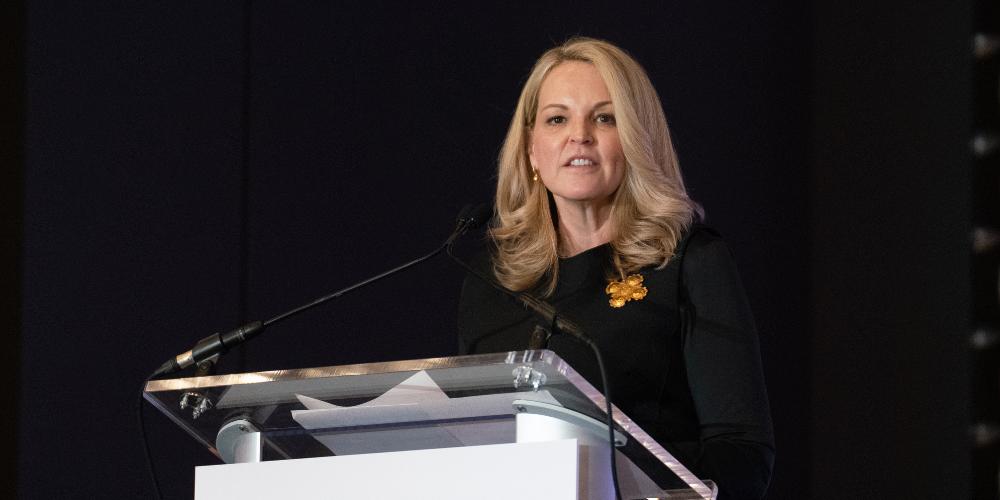Biogen on Digital Innovations to Increase Trial Access and Enhance Patient Experiences
Biogen’s Katie King discusses how Biogen is creating digital innovations that address patient access and participation burden, and what the impact of that has been for current trial participants and future patients.

How are you approaching bringing the patient voice and perspective into medicine development at Biogen?
Our goal is to authentically understand patient experiences and consider how we can apply them, given the goals of a study or program. Doing so has allowed us to develop initiatives that empower patients to take control of their medical journeys while expanding opportunities for clinical trial access.
One way we bring in the patient perspective is through the setup and conduct of patient advisory boards and insight sessions. We are also looking to start leveraging more social listening for continuous access to candid patient and community narratives .
Additionally, I like to encourage others and myself to think about our patients, as we go through our activities of daily living, reflecting on the tasks that seem mundane to us but might be a big deal for them. That subsequently translates into thinking about how patients might be impacted by their disease state when it comes to adhering to protocols, seeking medical attention, etc. It’s not only about getting a patient into a study, but also arming that patient with information and tools that allow them to confidently make choices throughout their healthcare journey .
"Small details have a big impact on patient experiences but often get overlooked because we focus on other more common areas, or we simply assume they are happening."
How does that approach translate into study teams and their work?
Weaving a patient-centered clinical trial tapestry reaches far beyond a recruitment, stipends/ reimbursements, and protocol design. While Biogen is an extremely patient-centric organization, sometimes it helps to bring attention to the opportunities that get less press.
For example, I like to emphasize the role that a patient voice can play in site contracts. I speak with study teams and say things like, “We need to make sure that these sites have enough time budgeted so that they are able to walk their patients to an imaging visit, or sit with them when they’re nervous, or have a conversation with a family member.” Those small details have a big impact on patient experiences but often get overlooked because we focus on other more common areas, or we simply assume they are happening.
Where are you focusing to improve patient experience?
Patient navigation. A family member was recently diagnosed with extremely advanced-stage heart failure. I was speaking with one of the PA’s about concerns with the cost of medications, medication adherence , adoption of necessary lifestyle changes, everything associated with the diagnosis. The PA spoke about their healthy heart clinic which was put in place to support every facet of the patient journey with heart failure and act as a navigator, supporting everything from medication accessibility to coaching on new dietary restrictions . It was such a relief knowing that my family member would have this invaluable resource available.
From a clinical trial perspective, this level of hand holding is just as invaluable. Patient Navigators help us ensure that patients don’t fall through the cracks, their voices are heard, and their needs are met to the best of our abilities.
"Success doesn’t always look like enrolling a patient into a trial. If we focus more on the long-term, it might look like getting patients better access to a diagnosis."
You’re also focused on clinical trial accessibility; how are you approaching increasing access?
Specifically in terms of broadly increasing HCP awareness and comfort in presenting clinical trials to patients as a care option. Currently I am in the process of seeking out a clinical trial for my family member, which has provided a timely and relevant opportunity to reflect on every friction point we’ve come across. More often than not, I find myself thinking, “That wasn’t easy, and it should have been.”
If finding a clinical trial takes me a long time, then how realistic is it to expect patients or HCPs, whose time is already stretched thin, to embark on what is sometimes a needle in a haystack journey to seek out a suitable fit. With that in mind, I want to focus on what we can do to make things easier and more transparent, so clinical trial awareness isn’t as dependent on serendipity.
Some of your work has included using voice biomarkers in the pre-screening of Alzheimer’s disease trials to ease patient burden. What can you share about that?
We used an AI-enabled software to detect cognitive impairment and Alzheimer’s disease neuropathology, based on voice. It took only 10 minutes to complete and could be done on any device. We implemented that for two trials as a pilot, to gauge how it would be received. We wanted to see if people would do the 10-minute assessment.
I had seen a disproportionate volume of underrepresented populations screen failing due to cognitive assessment scores, sites were experiencing resourcing issues, and as a result externally referred patients were often finding themselves trapped in a follow-up bottleneck. All of this was creating a less-than-ideal patient experience, further exhausting sites, and slowing down enrollment.
What was the value of choosing a vocal biomarker over other alternatives?
Vocal biomarkers have the ability to provide a wealth of clinically significant insights, with administration requiring little burden to patients or sites. Additionally, these voice-based assessments open up a unique opportunity to meet patients where they are while laying the foundation for initiating informed conversations about cognition and clinical trial participation with HCPs, family members, etc. Eventually, I would like to see this type of technology deployed to a broader grouping of people, even outside of a specific clinical trial context.
What is the impact of this digital biomarker work for patients?
This type of work allows people to empower themselves in the comfort and privacy of their own homes, particularly when we’re talking about something as highly stigmatized as cognition and cognitive decline. A digital biomarker assessment can provide patients with a pulse point of where they stand and a first step towards taking action.
The other reason is that if you only have, for example, 10 minutes to speak with your physician in the course of a visit, you can cut to the chase. “I did this assessment. This was the result. These are my genuine concerns.”
"A digital biomarker assessment can provide patients with a pulse point of where they stand and a first step towards taking action."
What is the impact of this digital biomarker work for study teams?
Current protocols require a diagnosis within X period of time, or X level of progression. We know that patients who come to a clinical trial site with clinically validated data are more likely to get follow-up from the site, versus patients without any data.
Arming patients with these types of digital markers that have convergent validity to screening mechanisms commonly used for clinical trial entry or general practice diagnostics gives us the ability to more quickly decide, “This is who this patient is, and this trial would be a good fit for them.” This becomes particularly critical as we talk about going deeper into rural populations and giving access to clinical trials. We want to have the highest degree of confidence that if we have a potential participant taking the time to travel to a site for screening, they are more likely than not to meet our eligibility criteria.
What is important to keep in focus as we develop digital innovations?
We need to look at the long-term when it comes to innovation. The focus is often on the short term ROI of a given initiative, which of course makes sense as we are a business. However, if we take the example of voice-based digital biomarkers, we might not have a direct “We will get X number of patients enrolled from this initiative,” But as I mentioned earlier, success doesn’t always look like enrolling a patient into a trial. If we focus more on the long-term, it might look like getting patients better access to a diagnosis.
Then, what does more patients getting earlier, proper diagnoses lead to? Most clinical trials require a diagnosis, so perhaps the result is better enrollment later in a clinical development planGetting a diagnosis also means that patients can actually get treatment, so the longer term ROI may also emerge post-approval. And as we are working in these more complex diseases, early access to treatment is a big deal for clinical outcomes and quality of life.
If we want to continue enhancing the patient experience, then It's important that we challenge the “mental red tape” of our industry.









